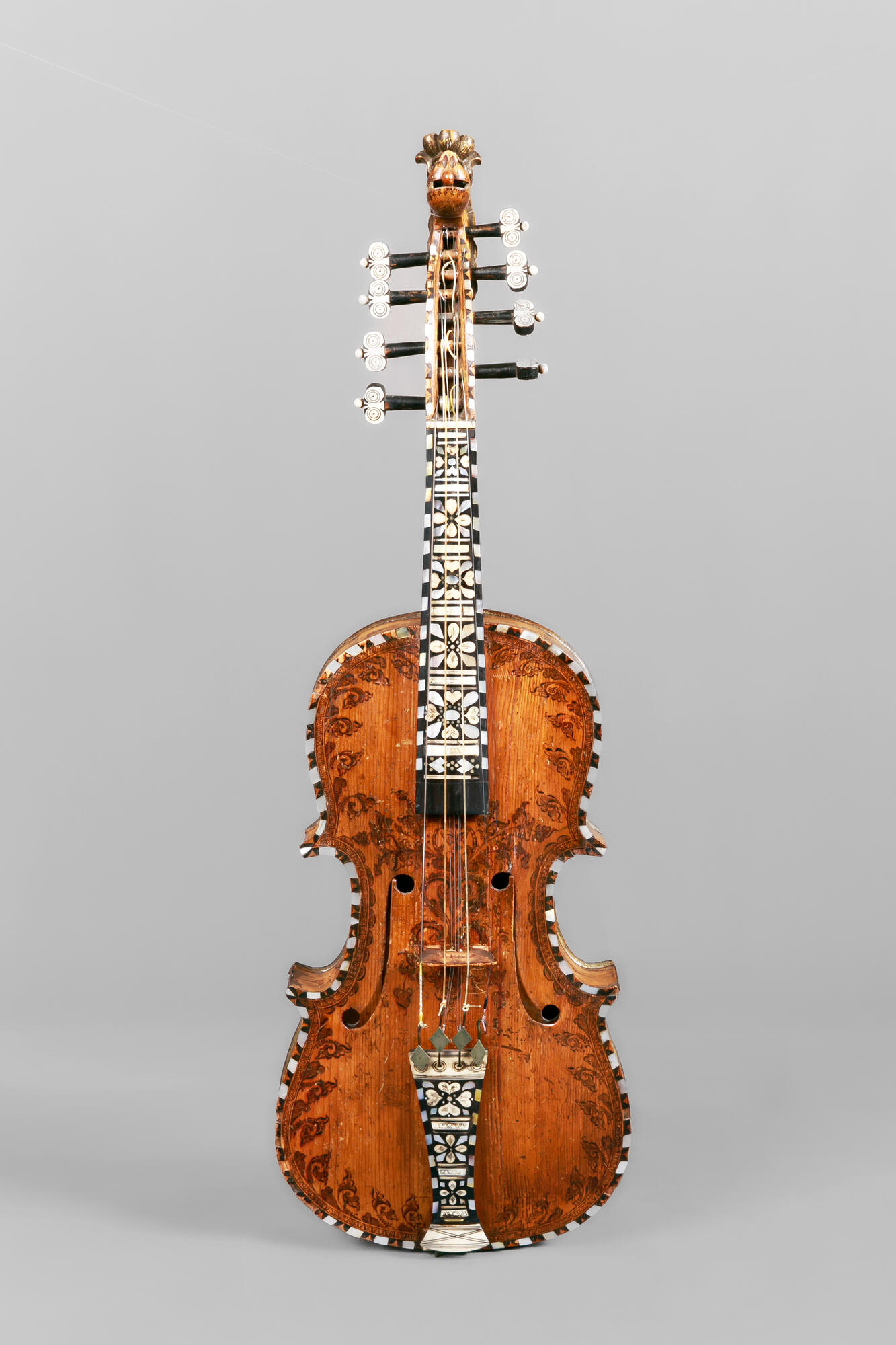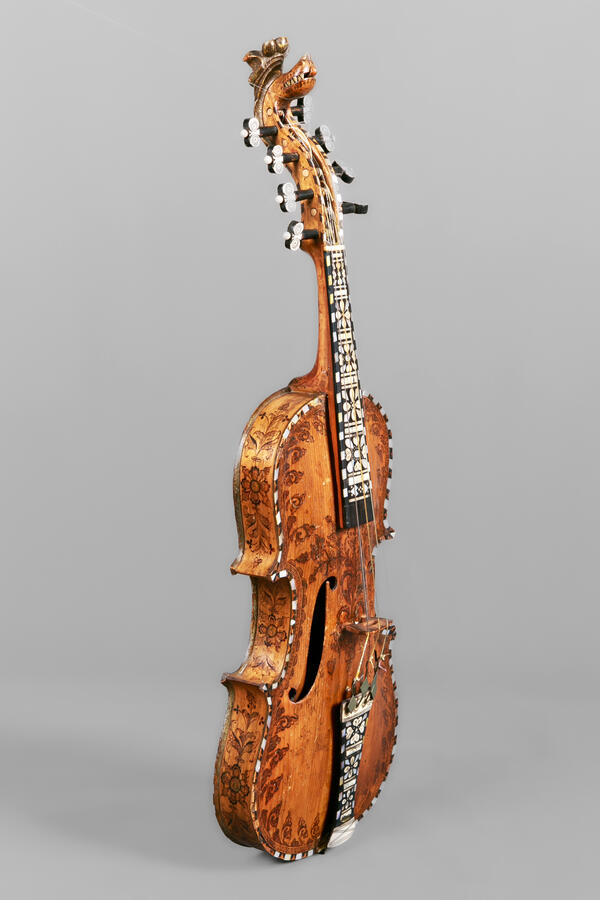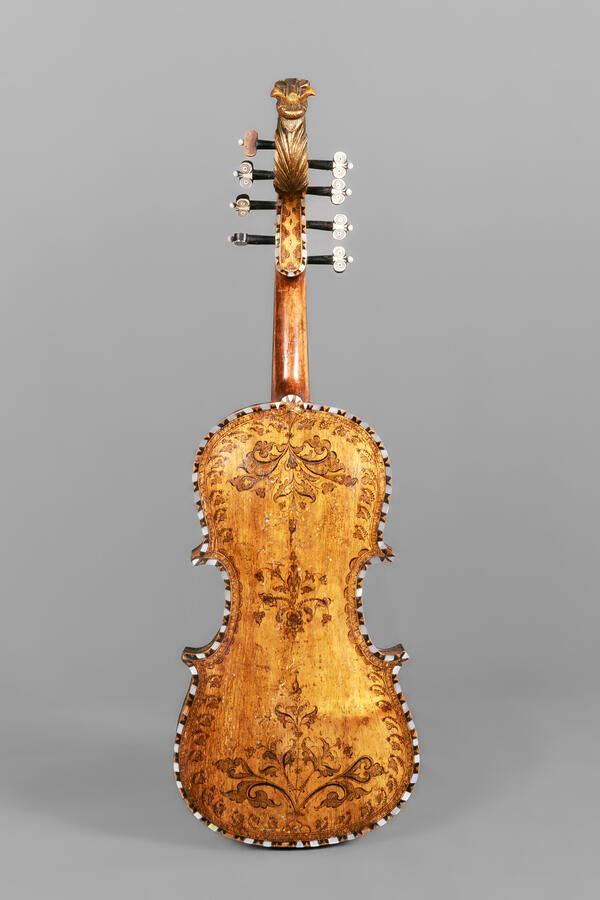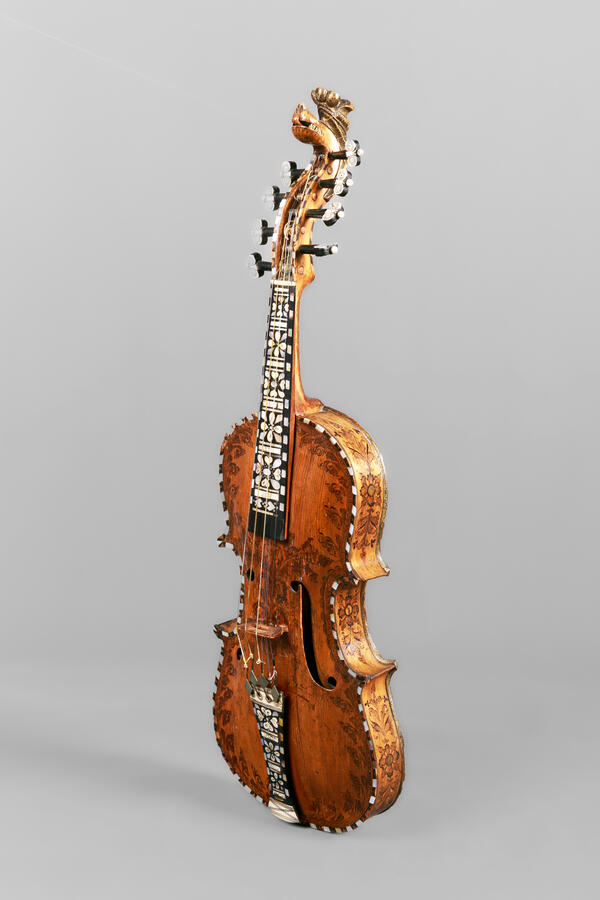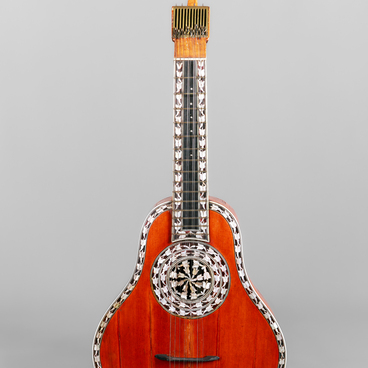The Hardanger fiddle, or hardingfele, is a Norwegian traditional fiddle named after the Hardanger district on the southwestern coast of Norway. The earliest known example of the hardingfele is the “Jaastad” fiddle. It was made by the craftsman Ole Jonsen Jaastad in 1651 and is currently stored at the University of Bergen.
The hardingfele is slightly smaller than the violin, it has more arched bouts, a short and wide fingerboard, and longer F-holes. The fiddle also has a longer pegbox than the violin because it uses eight strings. Four of the strings are played, while the other four are resonance strings. They are located underneath the fretboard and go through the holes in the bridge. Unlike the traditional violin, the hardingfele has more than 23 possible tunings depending on the melody and the region in which the instrument is being played.
The Hardanger fiddle is often referred to as the national instrument of Norway. Each fiddle is made by hand and is a real work of art. The instrument from the museum’s collection has a body decorated with floral patterns, while the fretboard, tailpiece, and even the pegs feature bone and mother-of-pearl inlays. The top of the pegbox is decorated with a carved head of a mythical creature.
In the 18th and 19th centuries, the hardingfele was considered to be the instrument of the devil. For that matter, priests had various saying such as “A fiddle is the devil hanging on the wall, ” or “When a fiddle is played, the devil dances on the roof.”
The Lutheran church preached that playing the fiddle was a deadly sin and that the musicians would go to hell after death. They were not allowed to enter the church, were considered to be devil’s messengers, and dark legends were told about their music.
According to one of these legends, the devil himself appeared at a village festival. He grabbed a fiddle and started playing the old Norwegian dance known as Fanitullen, or literally “the devil’s tune.” All villagers who heard his music danced until they died from exhaustion. There is a belief that the main theme from Edvard Grieg’s Piano Concerto was inspired by one of the versions of Fanitullen.
The hardingfele is slightly smaller than the violin, it has more arched bouts, a short and wide fingerboard, and longer F-holes. The fiddle also has a longer pegbox than the violin because it uses eight strings. Four of the strings are played, while the other four are resonance strings. They are located underneath the fretboard and go through the holes in the bridge. Unlike the traditional violin, the hardingfele has more than 23 possible tunings depending on the melody and the region in which the instrument is being played.
The Hardanger fiddle is often referred to as the national instrument of Norway. Each fiddle is made by hand and is a real work of art. The instrument from the museum’s collection has a body decorated with floral patterns, while the fretboard, tailpiece, and even the pegs feature bone and mother-of-pearl inlays. The top of the pegbox is decorated with a carved head of a mythical creature.
In the 18th and 19th centuries, the hardingfele was considered to be the instrument of the devil. For that matter, priests had various saying such as “A fiddle is the devil hanging on the wall, ” or “When a fiddle is played, the devil dances on the roof.”
The Lutheran church preached that playing the fiddle was a deadly sin and that the musicians would go to hell after death. They were not allowed to enter the church, were considered to be devil’s messengers, and dark legends were told about their music.
According to one of these legends, the devil himself appeared at a village festival. He grabbed a fiddle and started playing the old Norwegian dance known as Fanitullen, or literally “the devil’s tune.” All villagers who heard his music danced until they died from exhaustion. There is a belief that the main theme from Edvard Grieg’s Piano Concerto was inspired by one of the versions of Fanitullen.
The hardingfele is still extremely popular in modern Norway, especially in rural regions. It is one of the few European folk instruments with a tradition that has survived in spite of all the cultural crises, changes, and the influence of foreign musical trends.
